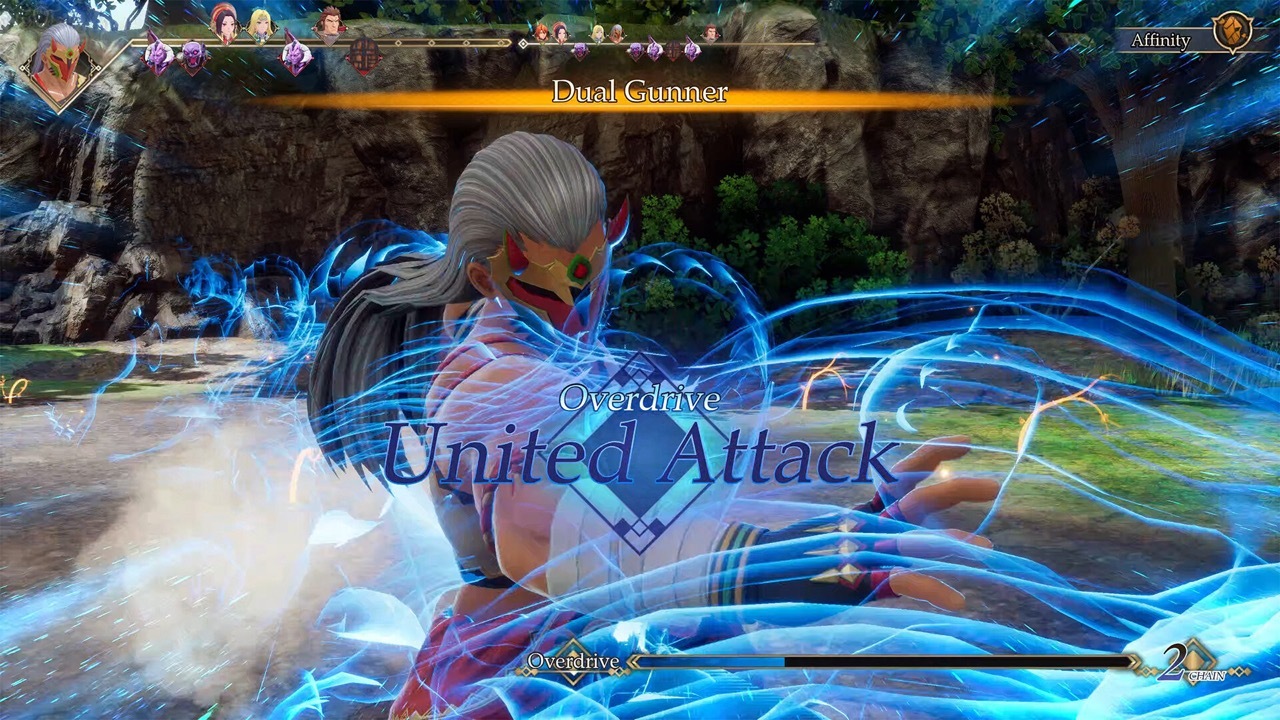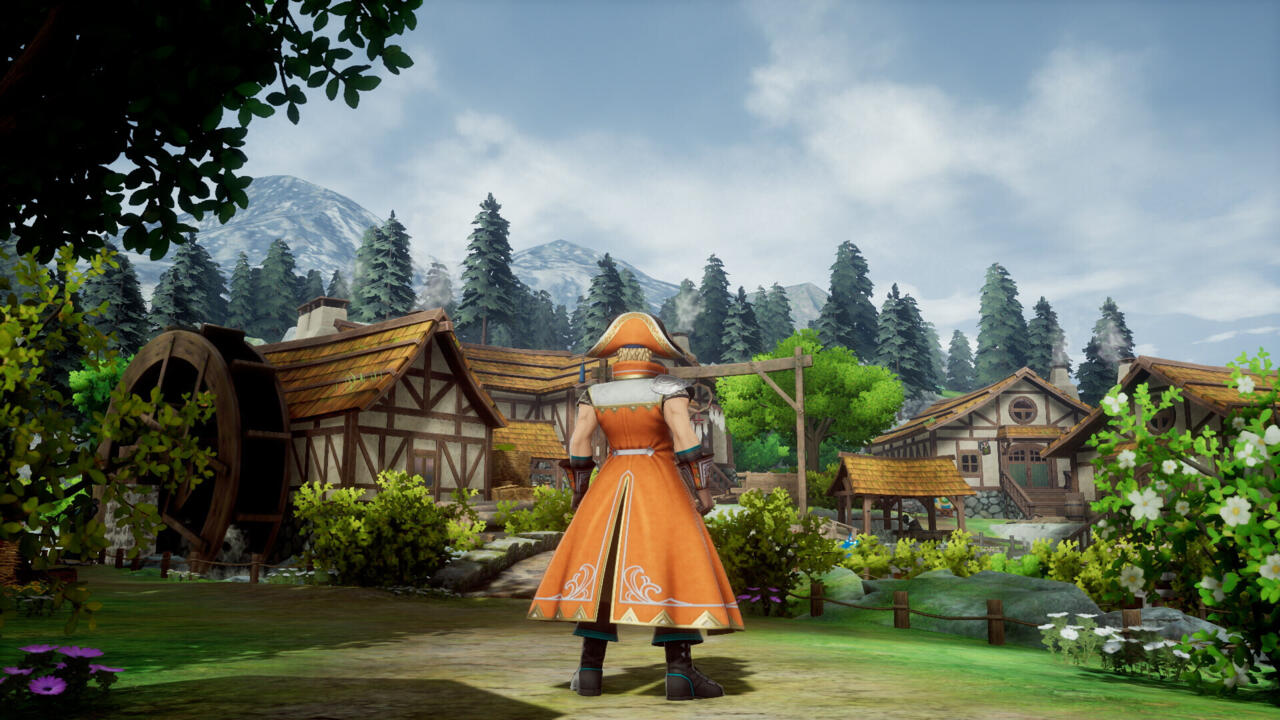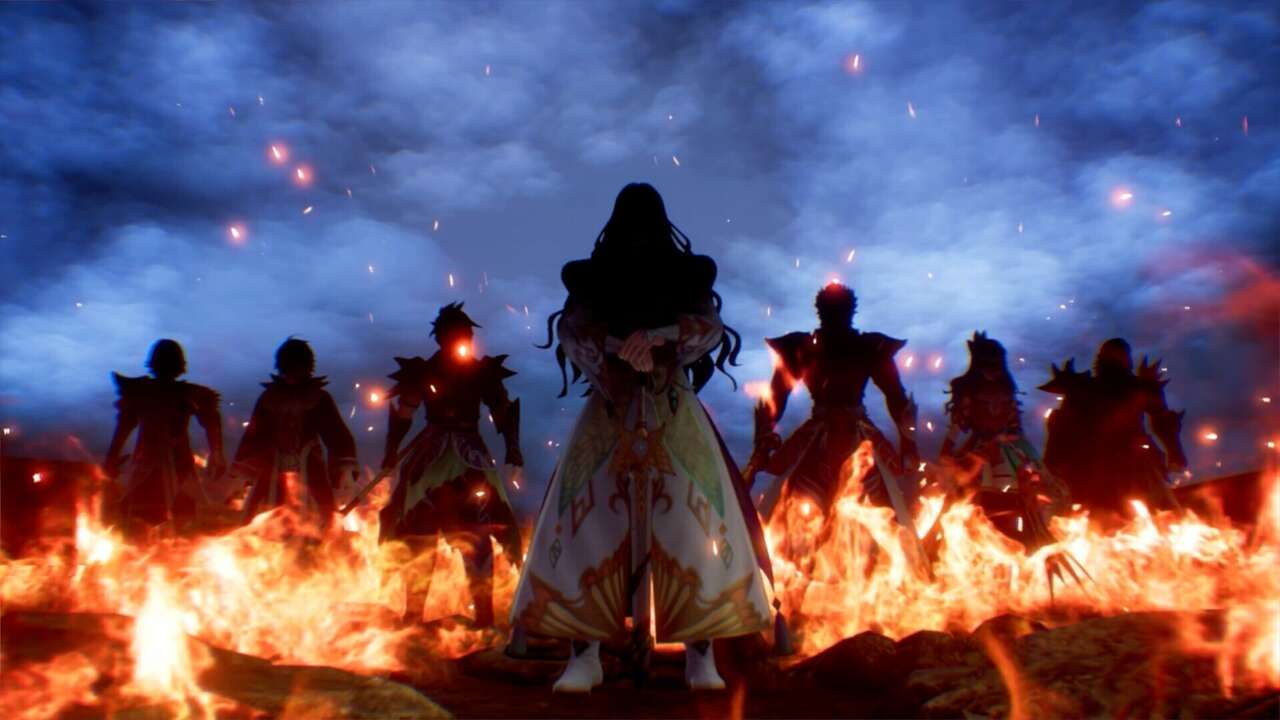SaGa stands as one of Square Enix’s longest-running series, but it’s also had a rough time outside of Japan. If you pick up a random SaGa game, you’ll probably understand why: SaGa games are JRPGs that don’t do things in the way most overseas players would expect. SaGa tends to focus more on complex, interweaving systems of combat, character growth, and questing. And that’s supplemented by narratives that tend to act more as connective tissue that link locations and objectives together instead of the sprawling, character-driven stories the genre has become known for. Wandering around blindly and piecing out what to do and how things work in a SaGa game can be incredibly compelling, but some entries in the franchise lean toward immensely frustrating. Romancing SaGa 2 is more the former than the latter, but its earlier releases were still an acquired taste.
Romancing SaGa 2: Revenge of the Seven is a full-on remake of a game many fans consider the series’ apex–if not among the greatest RPGs of all time. If there’s any game in the series that could reach out and capture a new audience in a way no other SaGa game has before, this is the one that could do it.
Romancing SaGa 2’s story begins ages prior to the modern day, when seven heroes fought to rid the land of evil forces. Their deeds have become the subject of myth and legend, and as times have grown ever more troubled, the people have yearned for their return. In the recent past, Emperor Leon and his two sons hear rumblings of the heroes’ revival, but soon learn the horrible truth–the heroes have themselves become agents of evil, and they slay both Leon and his son Victor in a vicious attack. Despite this loss, there is still hope: Inheritance Magic, which allows an Emperor to pass memories, abilities, and strength down to an appointed successor, beginning with young prince Gerard.
The inheritance system is one of Romancing SaGa 2’s most-distinctive gameplay elements. Defeating the wicked seven heroes won’t be accomplished overnight–in fact, it will take many generations and hundreds of in-game years, and each successive Emperor–whom you can often choose–takes up the task of their forebear where they left off. Even if you party-wipe–a condition that, in most other RPGs, would lead to a Game Over, you instead pick a new Emperor, amass a new party, and keep going.
Since your quest spans centuries, you’re allowed a certain degree of freedom in how to approach the task of defeating the heroes. Here’s where one of the remake’s best features shines: It offers helpful pointers to where quests and points of interest are, helping to alleviate the “what am I able to do now” problem that SaGa is notorious for. Most locations in the game are opened through exploration of a geographical region, being given information from an NPC, or through dialogue choices during questlines. You’re not obliged to do the good majority of the game’s quests beyond the beginning and ending events, but doing so can yield rewards: opening up new playable character classes, giving you access to new areas, or giving your Avalon Empire additional territory, meaning more money for your Imperial coffers–just to name a few. It’s also possible to close off some questlines permanently by making specific choices or simply running out of time. You’re not going to see everything Romancing SaGa 2 has to offer in a single playthrough, so it’s best not to worry about optimization and instead follow the quest threads you find interesting and fun.
You’ll be spending a huge chunk of your time playing Romancing SaGa 2 in combat. This is one place where the remake has received a massive overhaul over the original. Battles are still turn-based, but instead of inputting all of your party’s commands for the turn at once and seeing combat play out, you get a timeline where you can see when enemies will act relative to your party–and every action you choose executes immediately before moving on to the next character. The original’s Weapon and Spell Points have also been consolidated together into Battle Points, which are spent to use both spells and weapon skills during combat, making resource management simpler.
Also new is the Overdrive Gauge. Similar to Octopath Traveler, enemies have weapon and elemental weaknesses that will be revealed when hit by attacks. Exploiting these weaknesses fills up the Overdrive Gauge. When full, you can use it to have several party members fire off special attacks in a chain. Not only does this allow you to use several skills in immediate succession without a BP cost, but it also augments the damage those skills do significantly. As the game progresses and the enemies’ stats grow to match yours, using the Overdrive Gauge will become incredibly important to quick and decisive victory–and using it for a big, powerful combo strike never stops feeling satisfying.

But in order to get the most out of combat, you have to understand how SaGa’s systems differ from what you’re used to–though this particular remake makes a visible effort to demystify some of its more complex elements. Instead of gaining levels, characters gain stats and proficiencies based on their actions in battle: for example, if you use spears a lot when fighting, your spear skill levels will increase greatly in turn, affecting the damage you do with that weapon. Stat growth is significantly less obtuse than other SaGa titles, as you’ll be able to see how close you are to making gains at the end of battle.
Learning attack techniques also works in a distinct way. Not only does using weapons and magic increase your proficiency, but depending on a confluence of factors, you also have the opportunity to “glimmer” new skills in the middle of combat. These skills are tied to specific weapons and have their own branching trees. When you’re close to learning a new technique, you’ll see a light bulb next to one of your existing skills, indicating a chance of you glimmering a new skill if you use it. This is a marked improvement over some of the previous SaGa installments, where you essentially had to keep using skills in hope that something would trigger eventually. The skills learned by one character can be registered and taught to others in generations that follow, provided they have sufficient proficiency levels to equip them.
Formations will be learned as you progress–you usually learn a new formation with every new Emperor–and placement of your Emperor and allies can have a tremendous effect by giving assorted status buffs/debuffs, as well as affecting AoE techniques. You’ll want to strategize as much as you can, because there’s still one scary SaGa staple to talk about: permadeath. Every character has a starting amount of Life Points when you draft them into your party, and they lose one every time they’re KOed in combat. When their LP runs out, they are gone, including your current Emperor (though you’re allowed to pick a new Emperor and carry on). It’s not as bad here as in other series games, but having to run back and draft new party members because somebody gave up the ghost for good mid-dungeon is still not an appealing prospect. Since LP restoration is extremely rare, the need to keep your band away from getting KOed as much as possible adds a thrilling tension to both regular fights and boss battles.
If this all sounds like an interesting mix of systems, that’s because it truly is. Despite how initially abrasive they can be, when a SaGa game manages to grab you, it’s hard to escape. Romancing SaGa 2’s presentation and quality-of-life improvements do a fantastic job of making this far easier for series newcomers (and those who may have bounced off of other games in the series) to dive into. Even the story’s been expanded upon significantly: it’s still not as front-and-center as you might be used to, but you’ll find a very interesting tale of how the Seven Heroes lost their way through finding memories and piecing together bits over the course of your campaign.

It’s not quite perfect, however. As the game progresses, battles get longer and more arduous–enemies scale stats up as your party does–and even standard-issue foes tend to hit hard. While you recover to full HP after each fight, you’ll frequently find yourself straggling at the end of a dungeon, drained from having to use countless high-BP skills just to do a reasonable amount of damage. Restorative items exist, but are available in very limited quantities for the most part, so a lot of your time in dungeons winds up trying to navigate to avoid encounters–which becomes frustrating during those times when imprecise platforming comes into play.
There’s another reason to avoid encounters, as well. While this remake does a solid job at making certain game elements more transparent, there’s still one that remains very mysterious: how the game’s timer works. A combination of unseen factors, including the number of battles and completed-event flags determine when a generational shift to the next Emperor will happen and how many years pass in-between. This can be highly disruptive, interrupting current questlines and necessitating a time-consuming complete party reorganization. At least you have the option now for your current Emperor to immediately abdicate and reset these unseen timers, but it’s still an element where giving the player more information would be a benefit.
Regardless, Romancing SaGa 2: Revenge of the Seven is a superb remake of a classic game that rarely received due recognition outside of Japan. It’s filled with systems that are fun to explore and utilize alongside a core gameplay conceit that remains unique. If you’re looking for a different take on JRPGs–or just a unique RPG in general–this is a lengthy journey you’ll want to invest lots of time into.
